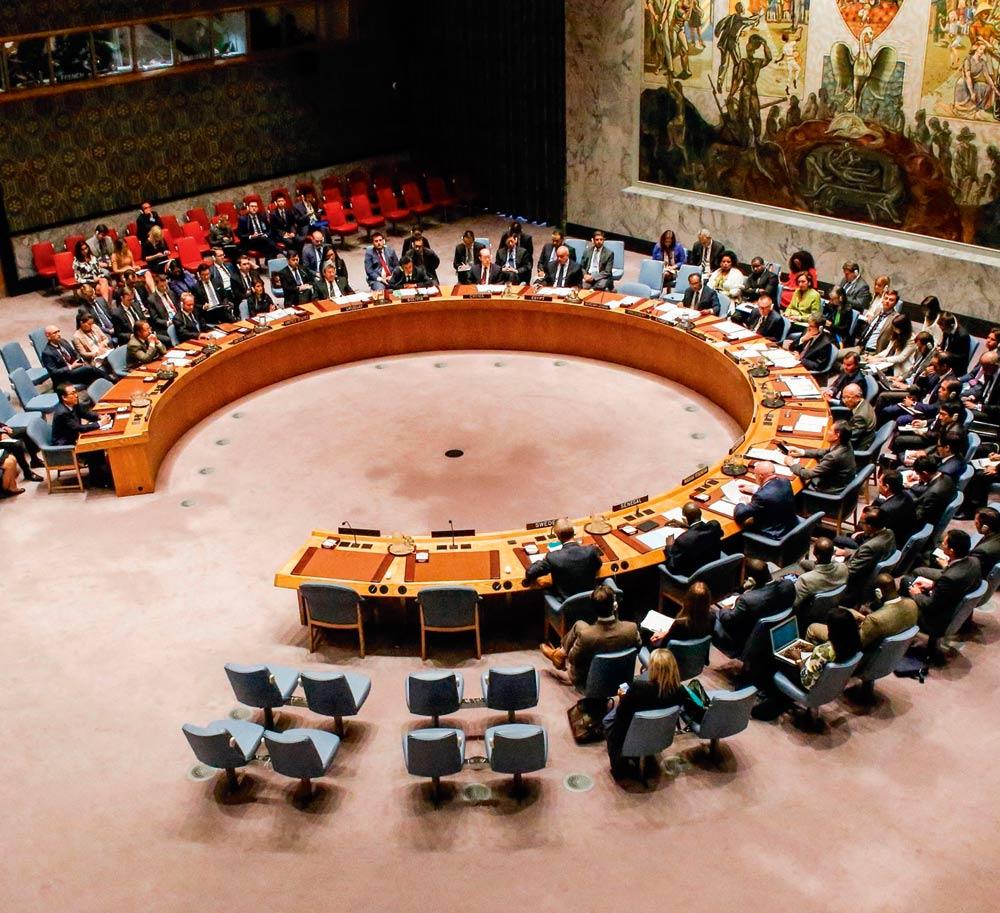
This article appeared in the the 30 June 2018 edition of The Week magazine. Click here to view our subscription options, and enjoy our in-depth briefings every week.
The use of economic sanctions has risen sharply in recent decades. How do they operate, and do they work?
How old are sanctions?
They date back to at least 432BC, when Athens issued the Megarian Decree, banning the merchants of neighbouring Megara from the Athenian Empire’s harbours and marketplaces, strangling Megara’s economy. History is littered with examples of embargoes (refusals to export), boycotts (refusals to import), and asset seizures imposed by one state against another; in the 19th century, the European powers often used “pacific” naval blockades to bring smaller nations to heel.
But modern sanctions really began after the First World War, when the League of Nations embodied hopes that the world could be policed using diplomacy and economic penalties, rather than warfare. The League used sanctions successfully in the 1920s, but failed in its biggest test: sanctions against Italy for invading Ethiopia had little effect because most European nations refused to observe them.
When are sanctions used today?
Until 1945, sanctions were mostly used to punish military aggression. Since then, they have been used as a response to the violation of a wide range of international laws and norms, from developing unauthorised nuclear programmes to internal human rights abuses; they have become the defining feature of the Western response to “rogue states” such as North Korea and Iran, and, more recently, to Russia’s intervention in Ukraine.
The three main actors that use sanctions are the United Nations, the United States, and the European Union. They are also used by other individual states and bodies such as the African Union.
How do UN sanctions work?
Sanctions resolutions have to pass the fifteen-member Security Council by a majority vote and not be vetoed by any of the five permanent members. The most common forms of UN sanctions are asset freezes, travel bans and arms embargoes.
Before 1990, the UN imposed them only twice, against white minority regimes in Southern Rhodesia (1966) and South Africa (1977). Since the end of the Cold War, they have been imposed more than 20 times, against, for instance, Iraq, Libya, Iran, Somalia, Liberia and the former Yugoslavia.
Although UN sanctions are binding on all member states, the UN has no independent means of enforcement and relies entirely on its members; as a result, enforcement is often weak. Besides, many obvious offenders – like Bashar al-Assad’s Syrian regime – have not faced UN sanctions because Russia and China have vetoed resolutions. That is, in part, why the EU and US have built up their own sanctions systems.
And how do their systems work?
Since the EU has no military force, sanctions are its most powerful foreign policy tool; but they must be approved unanimously by its member states. Since 1992, the EU has levied sanctions more than 30 times.
The world’s most prolific and effective user of sanctions, however, is the US: 26 separate programmes are currently administered by the US Treasury Department. Comprehensive regimes are imposed on states such as Cuba, Iran, North Korea, Sudan and Syria. And since 9/11, the US has launched an all-out campaign to disrupt terrorism and international crime, drug trafficking and money laundering, by imposing financial sanctions: the Treasury Department has a blacklist of more than 6,000 individuals, businesses and groups.
Why are US sanctions so powerful?
US sanctions don’t only forbid US citizens and companies from doing business with targeted countries and individuals; controversially, they are “extra-territorial”, preventing foreign third parties from doing business with them too. US markets and the dollar are central to the global financial system, so the US can demand that banks comply with its sanctions – on pain of revoking their vital dollar clearing licenses – and effectively freeze its targets out of the international financial system.
Once your name is on a Treasury sanctions list, it is hard to open a bank account anywhere in the world. US authorities have levied billions of dollars in fines against European banks for alleged infringements of sanctions. The US has also led the way with “smart” sanctions such as those imposed on Vladimir Putin’s inner circle, which have prevented them from travelling abroad or moving money out of the country.
Do sanctions work?
They are often dismissed as “merely symbolic”, but this is quite wrong: sanctions cause significant economic damage – but less commonly succeed in forcing a country to change an objectionable policy.
The standard text, Economic Sanctions Reconsidered, by Gary Clyde Hufbauer et al, finds that sanctions between 1914 and 1999 have been fully or partially successful in 34% of cases, though some academics see that as an overestimate.
Sanctions are regarded as having been successful in forcing South Africa to abandon apartheid, and in convincing Muammar Gaddafi’s Libya to give up its nuclear weapons. However, there are many high-profile failures.
Since 2006, North Korea has been exposed to US, EU and UN sanctions – the harshest regimen on the planet. The UN measures target 90% of the country’s publicly reported exports. Yet, as in the case of Saddam Hussein’s Iraq (see box), sanctions may have merely caused widespread hardship while little affecting the country’s leaders.
Will they carry on being used?
The trend over recent decades has been for sanctions to be used ever more often, and this is likely to continue. Sanctions offer a middle course of action between diplomacy and war; an option with relatively low risks and costs, albeit also with a lower probability of attaining its goals.
“Military action is increasingly unpopular, and words don’t work with hard regimes,” says Sir Jeremy Greenstock, a former British ambassador to the UN. “So something in between these is necessary. What else is there?”
This article appeared in the the 30 June 2018 edition of The Week magazine. Click here to view our subscription options, and enjoy our in-depth briefings every week.